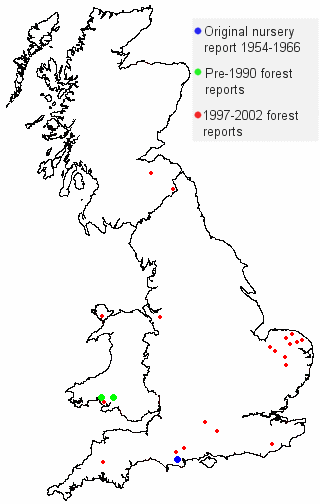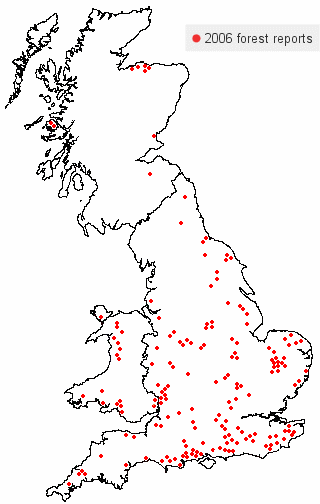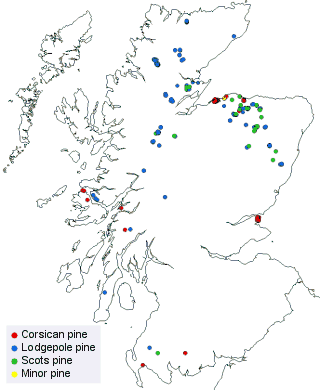The disease was first recorded in Britain in 1954 in nursery stock in Dorset, where it reoccurred sporadically until 1966. Apart from two occurrences in forest stands in Wales in 1958 and 1989 there were no reports of the disease until the mid 1990s. Since then, the incidence of the disease has increased markedly. Between 1997 and 2002 there were 22 reports of the disease in Britain, with the majority of these occurring in East Anglia.
In 2006 a survey was undertaken of all stands of Corsican pine under the age of 30 years on the Forestry Commission Estate to determine the extent and severity of the disease. The survey found the disease to be present in a number of previously unreported locations in England, Scotland and Wales, and overall 70% of the Corsican pine stands assessed were affected.


Furthermore, between 2007 and 2011 the disease has been identified in over 450 new stands (lodgepole pine, Scots pine and Corsican pine), with significant mortality occurring in some lodgepole pine stands, particularly in the east and north of Scotland.
